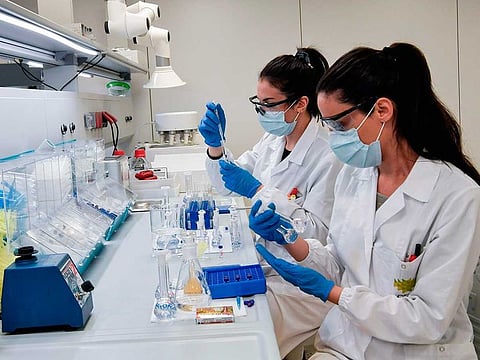Science diplomacy has come of age in the time of coronavirus
As the world battles to contain COVID-19, scientists and researchers take the centre stage

As the defining global crisis of our time, the COVID-19 pandemic has forced countries to engage in a new level of transnational cooperation to save the lives of their citizens. Nations across the globe have come together to share resources and to create plans of response to domestic and cross-border issues in a bid to protect health and economic security.
The time-sensitive nature of the crisis has, at times, forced politicians and experts to push aside political divisions in favour of constructive communication that would hopefully reduce the number of lives lost. The pursuit of a common goal, such as the development of a COVID-19 vaccine, has transformed the predominant diplomatic model from “white collar” to a more “white coat” model consistent with science diplomacy.
Amid the global pandemic of COVID-19, we have come to understand the fragility of the world that we inhabit. The escalating number of deaths worldwide has revealed that even countries long perceived as global leaders are vulnerable in the face of a killer virus. Worldwide, doctors and medical staff are being praised as heroes as they place their lives on the line to fight an invisible enemy.
What's science diplomacy?
The most extended definition, set by the Royal Society and the American Association for the Advancement of Science in 2010, refers to science diplomacy as consisting of three linked strands: ■ Science in Diplomacy: where scientific know-how and evidence is used to inform and support foreign policy objectives. ■ Diplomacy for Science: where diplomatic efforts and resources are aimed at facilitating international scientific and technical cooperation. ■ Science for Diplomacy: where scientific cooperation is used as a source of soft power to strengthen or foster foreign relations.
Scientists and researchers are standing alongside world leaders to conduct daily press briefings. Communities and individuals are glued to their screens to hear the newest scientific advancements in combating COVID-19, hoping to hear an announcement regarding a safe and effective vaccine.
As we witness countries locking down their borders and taking a unilateral approach to slow the march of the virus, it is equally crucial to create a global bridge between the scientists, researchers, academia and policy makers who are working to find solutions to help economies recover in the aftermath of COVID-19. While the concept of science diplomacy is not a new one, it has resurged as countries have cooperatively exchanged high quality medical equipment and provided data for analysis. Science diplomacy affords an open collaboration between nations to transfer scientific knowledge, best practices, and medical expertise to help solve societal challenges related to a pandemic.
Science diplomacy has proven its worth by equipping governments with the knowledge and tools needed to face current and future challenges.

Science diplomacy in history
To find the earliest example of science diplomacy, we can look back to 1300 BC when the Peace Treaty was signed between Ramesses II and Hattusili III to include a diplomatic exchange of doctors. Due to its timeless significance, a physical representation of the agreement is displayed at the United Nations Headquarters.
As we move forward in the 21st century, science diplomacy must be placed at the heart of international collaboration due to the rising challenges associated with future pandemics. Back in his 2008 speech at the annual meeting of the World Economic Forum in Davos, business magnate and philanthropist Bill Gates pressed for collaboration between developing countries and scientists to come up with vaccine solutions at a price that these countries can actually afford. He spoke about “…what we can accomplish if people who are experts on needs in the developing world meet with scientists who understand what the breakthroughs are, whether it’s in software or medicine.”
Emirati doctors on the frontline
A concept akin to science diplomacy, the “Flat World,” was explained by New York Times columnist Thomas Friedman as a world in which opportunities and resources are equally available to rich and poor countries, from access to technology and medicine. Though we have not seen the tailend of the first wave of COVID-19, the world is already anticipating a second wave of COVID-19 to hit developing countries. Consequences in these regions will be particularly tragic as they lack medical infrastructure and sufficient expertise.
Since the start of the pandemic, UAE national doctors have been serving on the front line alongside colleagues in countries where they are receiving training and education, including France, Germany, Italy, and the United States. Recently, the UAE also received 105 medical members from India to strengthen the UAE’s front-line capacity in combating COVID19.
Science diplomacy has proven its worth by equipping governments with the knowledge and tools needed to face current and future challenges. In our increasingly connected world, global viral outbreaks will become more common and we need to be prepared. Scientists, policymakers, and data analysists from around the world will need to connect and collaborate more than ever before.
— Ruqayya Alblooshi is an Emirati columnist. Twitter: @ruqayya82
Sign up for the Daily Briefing
Get the latest news and updates straight to your inbox









